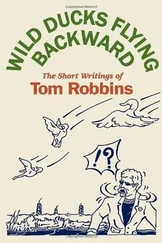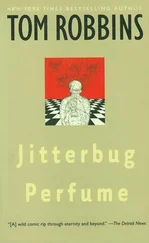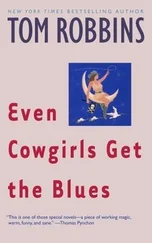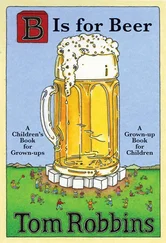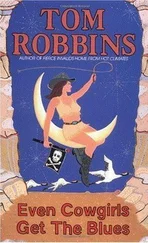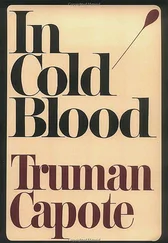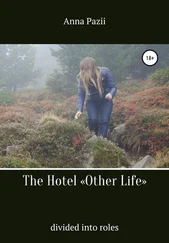Spring mushrooms fancy summer no more than the fall varieties like winter, so by mid-May of 1964 I’d put away my basket temporarily and shifted my gastronomic focus to tamer fruit, knowing that in a couple of months my father would be shipping me tomatoes from his Virginia garden. It was about that time, however, that someone happened to mention an article in a recent Life magazine that went into some detail about a different sort of mushroom, a variety that illuminated not the palate but the mind.
Curious, I tracked down that issue of Life, opened it to the article in question, and whoosh! Up jumped another charismatic cottontail, this one smaller, quicker, more furtive yet somehow more portentous than its predecessors; and I sensed that were I to run after it (speaking metaphorically, of course), it would lead me to a hole, a burrow, a shaft, an underground portal that opened upon some secret cockeyed world that though hidden, lay not far — not far at all — from where I sat reading a popular mainstream magazine.
Life was mainstream all right: mainstream, popular, corporate, and slick. Yet there’s reason to believe that Life has probably “turned on,” if I may use that phrase in its street slang context, more individual Americans than High Times, the Berkeley Barb, and all other counterculture periodicals combined. Had Ken Kesey opened Electric Kool-Aid stands on every college campus in the country, it would have made a lesser contribution than Life to the creation of that era of unprecedented foment we like to call “the sixties.” The pages I read in Life that day definitely catapulted me onto psychedelica’s helical trajectory and I’ve met a number of other (often influential) people for whom that same article was the starting point of a personal magical mystery tour, a bunny trail Frost scarcely could have imagined when he spoke of “the road less traveled.”
The article detailed the experiences of one R. Gordon Wasson, a successful Wall Street financier whose passionate interest in mycology led him to the mountains above Oaxaca, where in the hut of a bruja he ate a sacramental serving of teonanácatl, the so-called sacred mushroom of indigenous Mexicans. Wasson described a cascading ecstasy that lasted for hours, as well as “wakeful dreaming,” which is to say, though he was at all times fully conscious and intellectually astute, he entertained incredibly vivid visions of, among other things, radiant beings, luminous extradimensional landscapes, and melting castles encrusted with precious jewels. The bruja told Wasson that while white men talked to God, the Oaxacan Indians talked with God, back and forth, and that the mushroom was the conduit that made such a two-way conversation possible.
My reaction to Wasson’s account was immediate and pronounced: I wanted to experience teonanácatl for myself and, by God, I wanted it sooner rather than later! But why?
That’s a fair question. Why? It couldn’t be categorized simply as thrill seeking. As a boy, I’d fantasized about a life of romantic adventure but that was unrealistic kid stuff; influenced by movies and books and, moreover, of a wholly external nature, vastly different from Wasson’s internal expedition. I suppose there could have been an element of the romantic in my desire for the Mexican mushroom, an adult equivalent of stowing away on a smuggler’s sloop or running away with the circus, although in retrospect I think it was something more universally felt if less commonly expressed: a vague yet poignant desire to experience, up close and personal, the fundamental essence of reality, the “which of which there is no whicher,” the ghost in the machine. I guess I wanted to break into that melting gemstone castle and see if there was somebody — or some thing — in there who actually knew which came first, the chicken or the egg.
Off and on, for several years, I’d been reading Zen, I’d flirted with Tantric Hinduism, I’d surfed the smaller swells of Sufism, and tried to get down with the Tao. It was all very eye-opening and inspirational, and while Asian mysticism is an easy target for the sneers of secular cynics and sectarian dogmatists alike, it’s far more compatible with modern science than the misinterpreted Levantine myths, ecclesiastical fairy tales, pious platitudes, and near-desperate wishful thinking I’d been fed in Southern Baptist Sunday School. The wisdom in those spiritual texts was obvious, yet I’d integrated it into my daily life with but minimal success. From a practical point of view, it was like trying to teach a monkey to play chess.
I wasn’t unhappy exactly. I had an interesting job, sufficient material comfort, and a congenitally comic sensibility: a lens of levity that not even a neurotic alcoholic wife could fog. Still, something was lacking. Mysticism was too abstract, too remote to warmly embrace; art too concrete, too accessible to resonate for very long in those areas of the brain beyond the optic nerve. In that nondescript period between the end of the beige fifties and the beginning of the Day-Glo sixties, I found myself drifting unfulfilled in an ocean of circumstance. Perhaps I was simply itching to move farther outside the realm of normal expectations, thereby insulating myself from the temptations of bourgeois compromise. Maybe I wanted bliss, wanted freedom, wanted deeper meaning, wanted to experience what Surrealist poets meant when they rhapsodized about the Absolute. Maybe I, too, wanted a tête-à-tête with a supreme being. Or maybe I was just terminally curious. Whatever it was I wanted or imagined I wanted, I intuited, thanks to Life magazine, that there was some fungus down in ol’ Mexico that could very well hold the key to the only treasure — aside from love, of course — that really mattered.
What did I do then but pick up the phone and call the botany department at the University of Washington. I asked to speak with Dr. D. E. Stuntz, the resident mycology expert (I’d seen his name in a field guide), and when I had him on the line I, after identifying myself, came right out and asked if he could help me obtain some hallucinogenic mushrooms. Talk about naïveté! Even in 1963 this was naive. Not particularly amused, Dr. Stuntz curtly suggested I talk to Dr. Varro Tyler in the UW pharmacology department. So I rang him up, too.
With a chuckle, Tyler informed me that while he knew of Wasson’s exploits and was aware of mushrooms with similar psychotropic properties that grew here in the Pacific Northwest (Wow! No kidding?), this was not his area of interest. Before hanging up, however, Dr. Tyler gave me the name and number of an academic colleague, I’ll call him Jim, who had conducted a bit of research in the psychotropic field.
So I rang up this fellow Jim, who proved to be not only a medical doctor with a PhD in pharmacology, he, as luck would have it, was also a Sunday painter and an avid follower of my art column in the Times . Jim suggested we meet for lunch. Later that week, over platters of pasta, we discussed art and philosophy for a couple of hours before getting down to the business of teonanácatl and its gringo cousins. When I inquired if he knew how I might acquire some, Jim smiled and said, “You don’t want mushrooms.”
“Oh, but I do. I really do.”
“No,” he said. “Mushrooms aren’t trustworthy. The amount of psychoactive properties varies from season to season, locale to locale, even mushroom to mushroom. Two mushrooms growing side by side will often contain different amounts of the mind-affecting agent. It’s impossible to gauge a proper dosage.” He paused, registering my disappointment. “There’s something much cleaner, safer, more reliable, and equally effective. Actually, it’s even more effective, if that’s where you want to go.” He paused again. My forkful of tiramisu froze in midair. “It’s called,” he said, “lysergic acid diethylamide-25.”
Читать дальше

